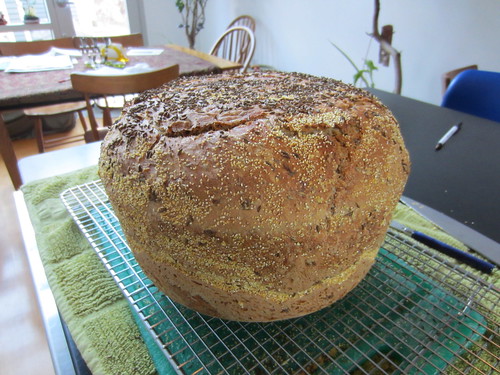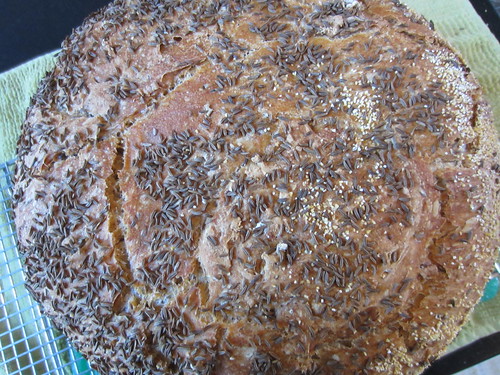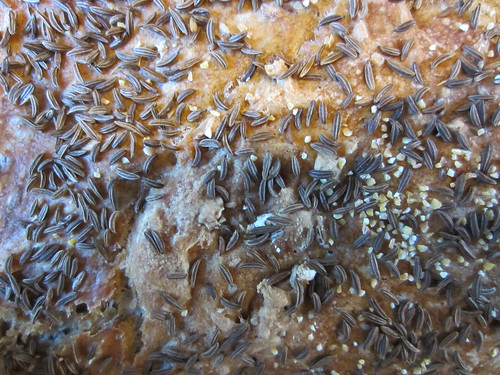For the last 20 years almost I've been teaching about the breakdown of starch in the environment of seeds. But as often occurs, I didn't understand what was right in front of my eyes in terms of context. Strange, since I try so hard to teach biology in a contextual framework.
What didn't I understand?
Yeast, the first organism to be domesticated by humans, digests starch. When the starch in dough is digested, what's left is the protein gluten. Gluten gives the bread its stretchiness, elasticity, and sometimes, if you've noticed, that enticing coolness to the bread body.
This has nothing to do with kneading. As a matter of fact for the past several years I've been making no-knead breads almost exclusively. About the same time as I figured out how to make it Mark Bittman published the recipe for no-knead bread in the New York Times. If you're interested I'd be glad to send you my recipe.
What does all this have to do with the biggest bread I ever baked?
I put some sourdough "starter" in hot water. This is old sourdough dough that has gone beyond its "expiration date." No longer efficacious for making things rise (though I think it could given enough time).
I added sugar, some molasses, and salt. Plus very warm, almost hot coffee. Stirred it all up and added fresh dry yeast.
Mixed in rye and white flour, caraway seeds, and let it all sit for a couple of hours. Placed it in a large Dutch oven (here's how it became the largest), let it sit for a couple more hours (We decided not to go out to the movies. It was too windy and cold to ride our bikes), and bake at a hot (350 F) but not super hot (I usually bake at 400 F) oven.
Spoiler alert, I gave away the recipe. But if you'd like to discuss the chemistry of bread some more send me a note and we can talk.



No comments:
Post a Comment